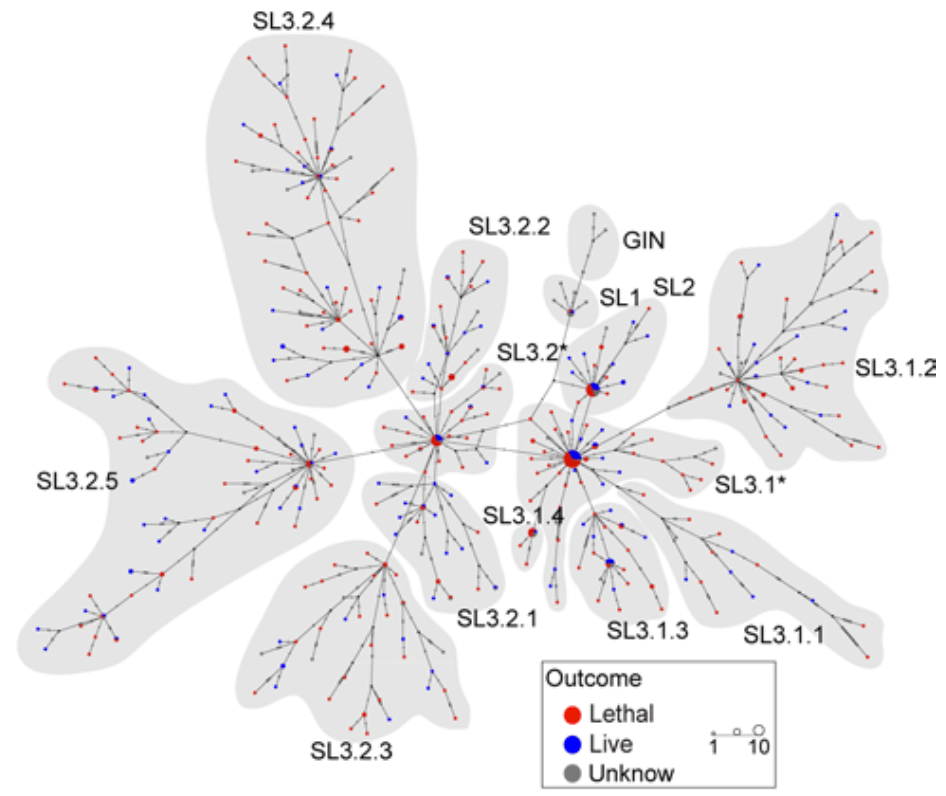From 2013 to 2016, western Africa faced an enormous outbreak of Ebola in which 28,616 people fell ill and 11,310 died. The overall case-fatality rate (i.e., the percentage of people who died from the infection) was nearly 40%. However, the case-fatality rate varied greatly. In some locations, the virus killed 80 to 90% of the people it infected. Why?
The virus was evolving into many different lineages, a new study suggests. (See image on right.) An international team of mainly Chinese researchers sequenced and analyzed the genomes of Ebola viruses sampled from 514 people in Sierra Leone in 2014. As the virus spread, it was gathering mutations. By tracking these mutations, the researchers constructed a “family tree,” which consisted of 11 distinct lineages.
…
Take lineage SL3.2, for instance. The case-fatality rate was 66%. But when this virus picked up a mutation called T5849C, the case-fatality rate increased to 73%. When the virus gained yet another mutation, called G17848A, the case-fatality rate leapt to 81.5%. Clearly, viral genetic factors played a key role in determining whether a patient lived or died.
…
Regardless of the exact explanation, the possibility that natural selection might favor Ebola evolving to become more lethal is troublesome.
The GLP aggregated and excerpted this blog/article to reflect the diversity of news, opinion, and analysis. Read full, original post: Ebola Mutation Map Suggests the Virus May Evolve To Become More Lethal
































